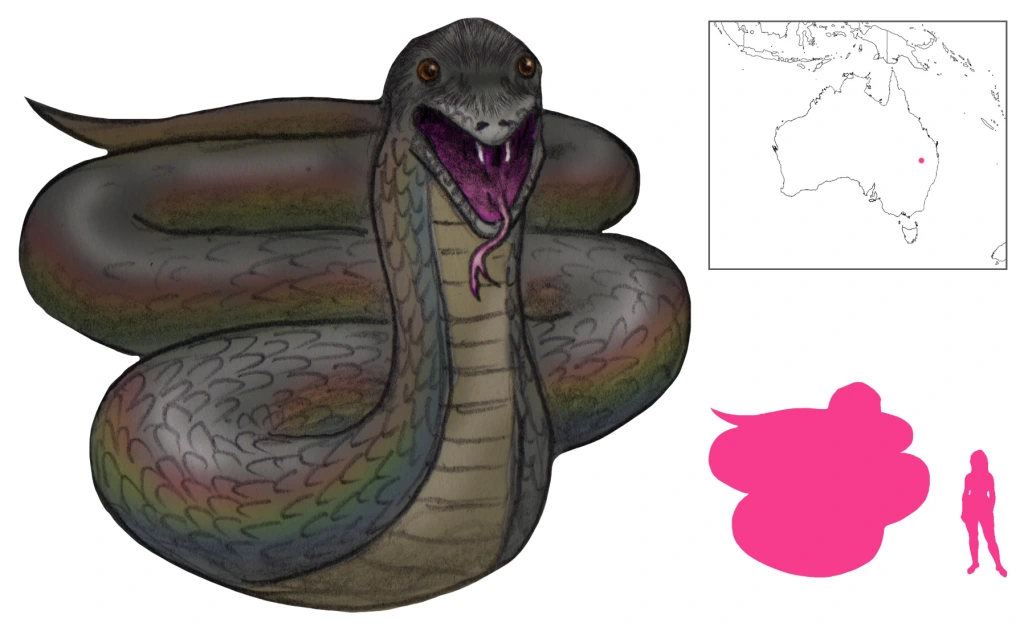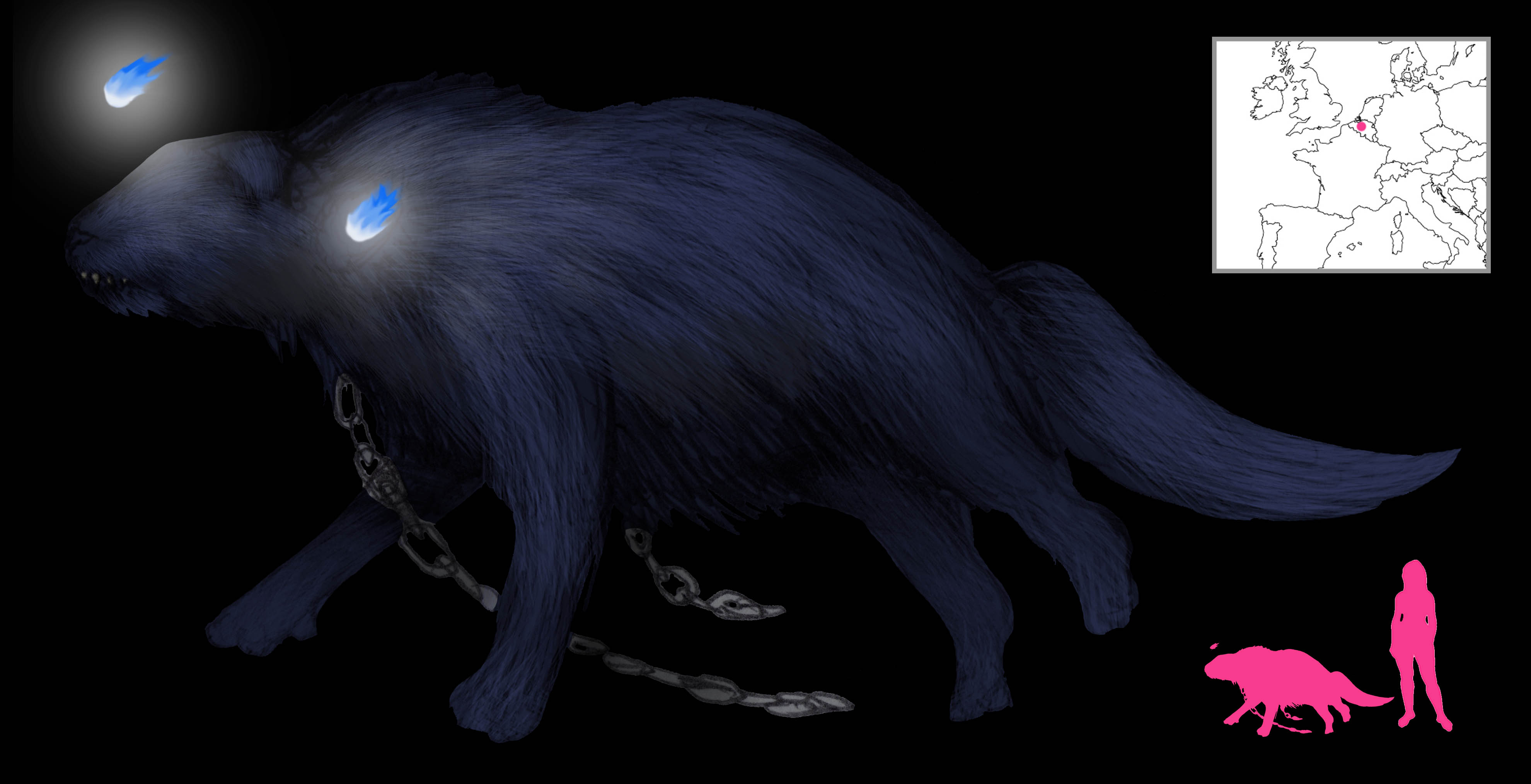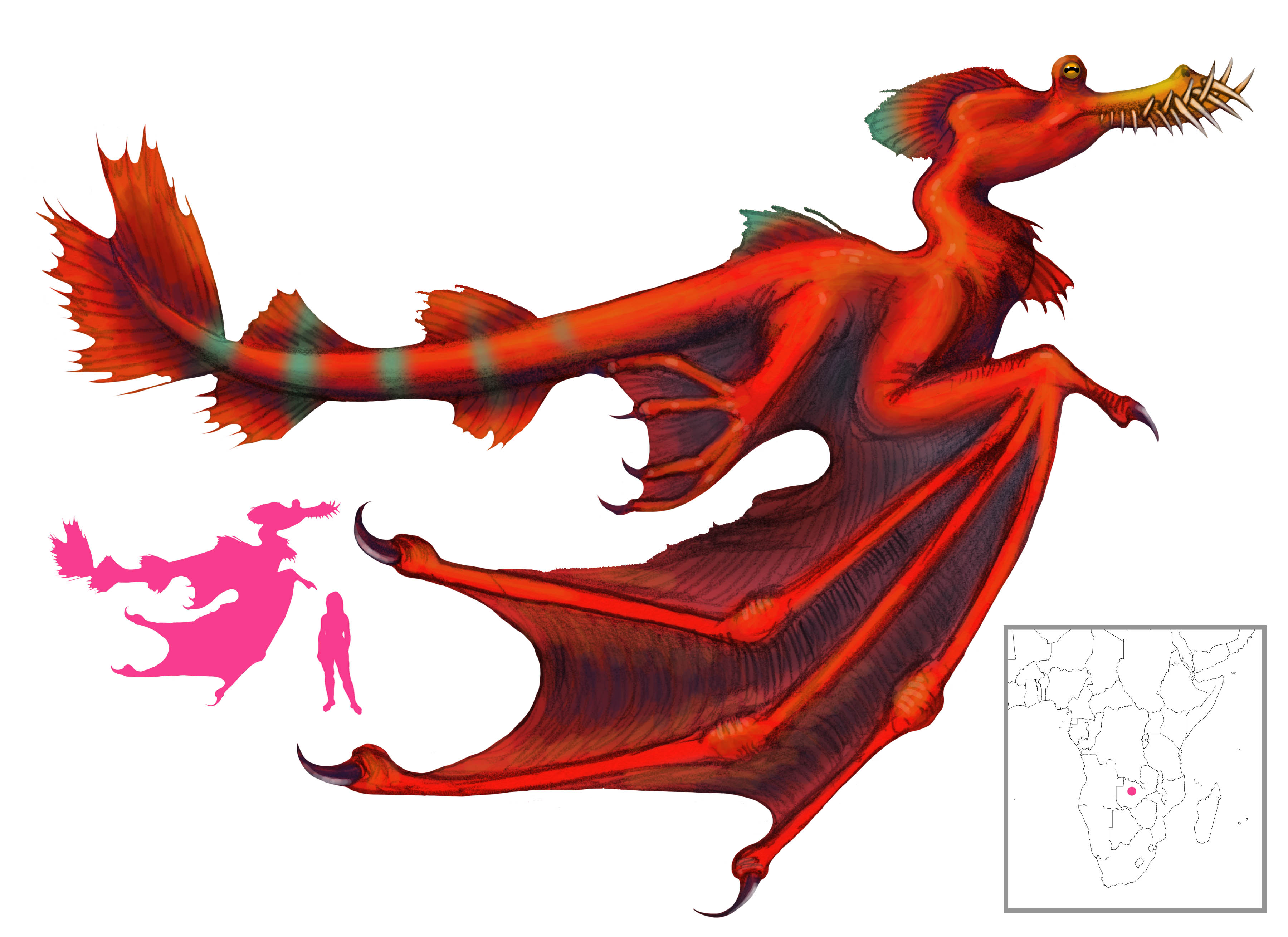Variations: Behemoth; Leviathan; Kuyūban, Kuyoota, Kuyūta, Kuyootan, Kuyūtan, Kuyoothan, Kuyūthan, Quyuta; Kujata (erroneously based on mistranslation from Spanish), Rakaboûnâ (erroneously based on mistranslation from Arabic)

Early Islamic cosmology tells that when God created the Earth, he saw it to be wobbly as a ship in a stormy sea. To support it he created an angel who held it by the east and west. But there was nothing below the angel, so he created a red ruby rock (or a green gemstone rock, according to al-Wardi) a with 7,000 perforations in it, from each of which issues a sea whose breadth God only knows, and the angel stood on the rock.
Then God created (or brought down from Heaven) a great bull to support the rock. This bull is enormous beyond comprehension. Al-Qazwini describes the bull as having 40,000 eyes, 40,000 noses, 40,000 ears, 40,000 mouths, 40,000 tongues, and 40,000 legs. Al-Damiri’s list gives the bull 4,000 of each of these features instead. Al-Wardi refers only to 40,000 horns and 40,000 legs. The distance between each of the bull’s pairs of legs would take 500 years to cover. The spread of his horns goes beyond the boundaries of the Earth. He breathes twice a day; as his nose is in the water, this causes the tides to ebb and flow. When he shifts he causes earthquakes.
The bull held the rock on his back and horns, and he stands on the back of a great fish (with or without a layer of sand between the bull and the fish). The fish is so large that all the seas would be like a grain of mustard in his nostril. Below the fish are varying combinations of water, earth, suffocating wind, sand, darkness, and mist, and that is as far as human knowledge goes.
Spectacular as it may be, this cosmology was apparently never taken too seriously. Al-Qazwini relegates it to his section on “Differing Opinions of the Ancients on the Shape and Location of Earth”; the cosmological sections of the Wonders of Creation are much less poetic. It inspired the Persian expression az mah ta mahi, “from the moon to the fish”, i.e. the whole of creation.
What are the names of the bull and the fish? Logically, a giant land creature and a giant sea creature in an Abrahamic religion would be Behemoth and Leviathan, respectively. Indeed, Guest and Ettinghausen attribute the oldest rendition of this cosmology to Ahmad-e Tūsi’s Wonders of Creation, where the bull is Behemoth and the fish Leviathan. But textual corruption sets in around the time al-Qazwini cites Wahb bin Munabbih in his own Wonders of Creation, and by then the two godbeasts had swapped names. The fish became Behemoth (Bahamut or Bahemut in Arabic) while the bull was saddled with increasingly garbled misreadings of Leviathan – Kuyūban or Kuyūthan in al-Qazwini, Kuyūtha or Kuyūthan in al-Damiri, Kuyūthan in al-Abshihi, and so on.
Older English translations of Borges’ Book of Imaginary Beings incorrectly translate the bull’s name to “Kujata”. Borges apparently would have pronounced “j” as “y”, so newer editions of the Book use the more accurate “Quyuta”.
Perron gives the name of the bull as Rakaboûnâ, a hilarious but entirely understandable translation error.
References
al-Abshihi, C. (2008) Al-Mustatraf fi kul Fann Mustadhraf. Dar Al-Marefah, Beirut.
Borges, J. L.; trans. di Giovanni, N. T. (1969) The Book of Imaginary Beings. Clarke, Irwin, & Co., Toronto.
Borges, J. L.; trans. Hurley, A. (2005) The Book of Imaginary Beings. Viking.
Al-Damiri, K. (1891) Hayat al-hayawan al-kubra. Al-Matba’ah al-Khayriyah, Cairo.
Guest, G. D. and Ettinghausen, R. (1961) The Iconography of a Kashan Luster Plate. Ars Orientalis, v. 4, pp. 25-64.
Lane, E. L. (1883) Arabian Society in the Middle Ages. Chatto and Windus, London.
Al-Mundir; Perron, N. trans. (1860) Le Nâċérî: La Perfection des Deux Arts. Bouchard-Huzard, Paris.
Al-Qazwini, Z. (1849) Zakariya ben Muhammed ben Mahmud el-Cazwini’s Kosmographie. Erster Theil: Die Wunder der Schöpfung. Ed. F. Wüstenfeld. Dieterichsche Buchhandlung, Göttingen.
Al-Wardi, S. (2007) Kharidat al-‘ajaib wa faridat al-gharaib. Maktabat al-Thaqafa al-Diniyya, Cairo.









